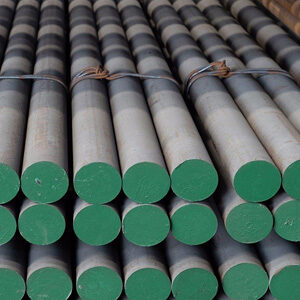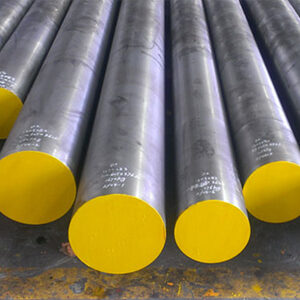The Art of Tool Steel Selection for Manufacturing Success
 Choosing the optimal tool steel is a nuanced balancing act. The material must withstand intense pressures, temperatures, sliding contact, and caustic chemicals. Yet also maintain razor sharpness, thermal stability, and micron-level precision through millions of cycles. Identifying the perfect grade and treatment blends science with experience and intuition.
Choosing the optimal tool steel is a nuanced balancing act. The material must withstand intense pressures, temperatures, sliding contact, and caustic chemicals. Yet also maintain razor sharpness, thermal stability, and micron-level precision through millions of cycles. Identifying the perfect grade and treatment blends science with experience and intuition.
In this guide, we’ll explore the art of tool steel selection. Discover how engineers synthesize application requirements, production volumes, cost limitations, past successes, and data comparisons into informed decisions. A thoughtful selection process delivers tooling with the exact blend of hardness, toughness, and manufacturability needed to excel. The highest performing tools start with mastering the art of material selection.
Defining the Manufacturing Challenge
Every tool steel application begins by clearly defining the challenge. This includes:
Operating Environment
- What temperatures, pressures, and stresses will the tooling experience?
- What chemicals, liquids, or gases will it contact?
- Does it need corrosion or oxidation resistance?
Critical Tool Properties
- What level of hardness, wear resistance, and strength are essential?
- How much toughness and shock resistance is required?
- What dimensions, surface finish, and tolerances are crucial?
- Does the tool interface with other components?
Production Volumes
- What batch sizes and total production runs before replacement?
- How many operations happen per hour or day?
- What level of consistency and uptime is expected?
- How quick and frequent are tool changes needed?
Defining every facet of the challenge focuses the tool steel search.
Research Candidate Grades
With a detailed application profile, potential tool steel grades can be researched:
- Consult AISI, ASTM, DIN, and other specifications for compositions and properties of standard alloys.
- Review data sheets from tool steel suppliers highlighting common grades for an industry or process.
- Search published studies and reports of tools tested in similar conditions.
- Talk to industry peers and tooling experts for off-the-record recommendations based on experience.
- Compile a list of candidate grades suited for the temperature, stresses, hardness, precision, and batch needs.
Cast a wide initial net to capture all feasible options. Approximately 10-15 grades provide a robust list for deeper investigation.
Critical Characteristics Comparison
With candidate grades selected, their attributes can be critically compared:
Quantifiable Properties
- Hardness values in HRC for heat treated and tempered steel
- Tensile and yield strengths from testing
- Impact toughness energy in ft-lbs or joules
- Maximum service temperature capabilities
- Coefficients of thermal expansion
Chemical Composition
- Primary alloying elements and their influence on properties
- Carbon content and carbide forming tendencies
- Impurities that may influence behavior
Expected Costs
- Material cost per pound or kilogram
- Production cost factors like melting, processing, machining
- Lifecycle cost considerations for maintenance, longevity
Past Field Experience
- Documented performance in similar applications
- Known limitations or cautions regarding the grade
Comparison matrices help objectively evaluate how well each grade fits the needs.
Heat Treatment Optimization
Tool steel properties fully manifest after heat treating. Optimizing this processing is crucial:
Hardenability
- Will the steel reach optimal through-hardness based on section size and quenchant?
- Is an interrupted quench needed for larger cross sections?
Desired Hardness
- What final hardness (HRC) is ideal for wear resistance versus brittleness risks?
- Will multiple tempering cycles be needed to reach the optimal hardness?
Dimensional Stability
- How much change in size or shape can be tolerated when heating to hardening and tempering temperatures?
- Will thermal stresses lead to unacceptable distortion?
- Will the steel microstructure and hardness remain consistent across the tool?
Simulating heat treatment on samples predicts how well a grade can reach its potential suited to the particular tool geometry and requirements.
Obtaining Test Samples
Before commitment to a new grade, real-world testing should be performed:
Sample Acquisition
- Request material samples from mills and stockholders.
- Order sample forgings and castings from tooling suppliers.
- Check industry groups and professional societies for testing programs.
Manufacturing Trials
- Heat treat samples using the planned production process.
- Machine samples into simplified tool geometries and features.
- Test techniques like EDM, welding, texturing, and coatings.
- Validate the grade can be tooled into the finished form needed.
Testing proves out expectations and avoids surprises before high-volume tool production.
Accelerated Testing
Exposing samples to exaggerated conditions predicts service performance:
Wear Resistance
- Use elevated pressures, abrasives, or temperatures for accelerated wear testing
- Cycle samples well past expected lifetimes to identify wear modes
Corrosion Resistance
- Use salt spray, humidity, or chemical immersion testing to simulate years of damage over weeks
- Electrochemical testing predicts localized corrosion risks
Thermal Stability
- Thermocycle samples from freezing to elevated temperatures beyond service extremes
- Check for cracks, hardness changes, distortions after extended testing
Accelerated testing compresses years of tool life into a short trial validating the grade selection.
Qualification Through Experience
 Successful field deployment instills confidence:
Successful field deployment instills confidence:
Limited Trial Use
- Test tools in non-critical low-volume applications first.
- Thoroughly inspect for damage modes and needed improvements.
Expanded Implementation
- Widen use of the alloy to higher priority applications.
- Gather data on revisions needed to maximize performance.
Full Integration
- Eventually transition the grade into high volume productiontooling once proven.
- Monitor consistently to confirm behavior matches qualifications.
Earning trust through field experience ensures selected grades live up to expectations before high stake applications.
Cost and Availability Realities
Theory and testing inform decisions but practical factors remain:
Lead Time
- Check if the alloy is in stock or requires melting and forging orders.
- Rush orders drive up prices and limit special processing options.
Quantity Pricing
- Ordering larger batches may reach better per-pound/kilogram pricing.
- But avoid over-purchasing material not quickly put into production.
Processing Capabilities
- Local tooling suppliers may not have heat treat or machining capabilities optimized for a grade.
- Special outsourcing may increase costs.
Practical constraints must align with performance priorities when selecting tool steel grades.
Key Takeaways for Tool Steel Selection
Selecting optimized tool steels requires both science and art:
- Clearly defining all application requirements and objectives.
- Researching grades potentially suited to the conditions.
- Critically comparing specs, alloy effects, costs, and past use.
- Modeling response to heat treatment for the unique tool geometry.
- Obtaining samples for real-world testing before commitments.
- Using accelerated testing to simulate service life in a short timeframe.
- Gradually qualifying grades from low to high priority uses as confidence builds.
- Judging availability, lead times, pricing, and processing capabilities.
With care and experience, manufacturers can consistently choose tool steel grades delivering the perfect balance of properties needed to excel. Mastering selection transforms good tools into outstanding performers.
FAQ
What are the main tool steel characteristics considered during selection?
Key characteristics evaluated when selecting tool steels include:
- Hardness potential through heat treating
- Toughness and impact strength
- Wear resistance and fatigue limit
- Maximum operating temperature
- Corrosion or chemical resistance
- Hardening depth based on section thickness
- Required precision, surface finish, and tolerances
- Production batch sizes and total lifetime throughput
What methods determine if a tool steel grade will work well for an application?
To evaluate grade suitability, manufacturers use:
- Property comparisons to specifications and published data
- Simulated heat treating to match tool requirements
- Obtaining samples for testing in real-world conditions
- Accelerated testing through exaggerated cycles
- Limited trial deployments to lower risk applications first
- Experience tracking performance from low to high volumes
What practical factors are also considered when selecting tool steel grades?
Along with performance, practical considerations include:
- Availability of the grade from stock or mill orders
- Lead time for raw material acquisition
- Quantity pricing based on total volume needs
- Processing costs for heat treating, machining, etc.
- Local supplier capabilities optimized for the alloy
How can toolmakers gain experience with new tool steel grades?
To gain experience with new alloys, toolmakers should:
- Review published data from reputable mills, institutes, and conferences
- Request samples from materials providers for testing
- Start with limited evaluations in non-critical applications
- Expand usage to higher priority tools as confidence increases
- Consult with experienced peers who have used the grade
- Consider joining industry testing programs and consortia
What methods accelerate real-world testing of new tool steel grades?
Accelerated testing techniques include:
- Exposure to exaggerated temperatures, wear, or chemicals
- Cycling well past expected lifetimes
- Electrochemical corrosion and salt spray testing
- Checking dimensional stability through temperature extremes
- Microstructural analysis and hardness checks before and after testing

